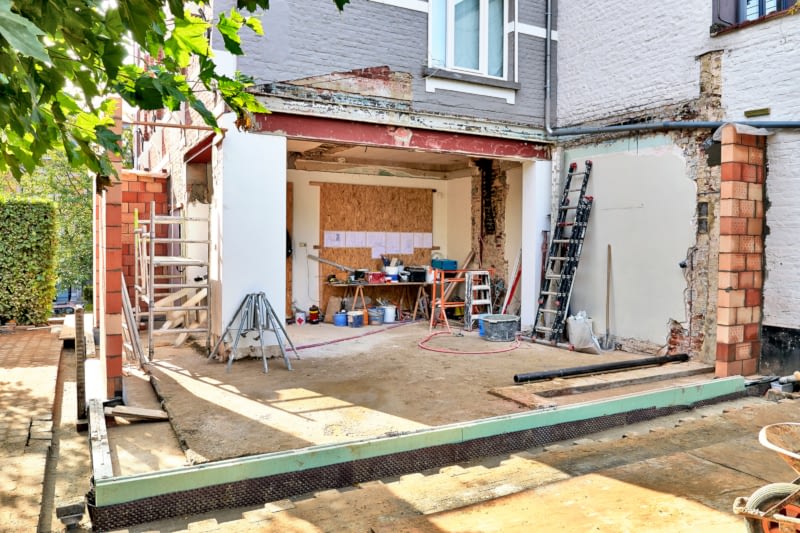Despite the challenges, the building trades have experienced a decided uptick in activity in 2021, according to the Houzz Barometer. Professionals in the residential design and construction field seem confident that the trend will continue.
As we pointed out in an earlier post, the pandemic has forced homeowners to rethink essential home design. A study of architecture reveals that home design evolves based on changing family demands. Many of us still live in homes where configurations haven’t changed all that much in the last 50 years. If we go back further, to just after the Victorian era, the addition of indoor plumbing and eventually central heating meant the creation of indoor bathrooms and the diminishing demand for a fireplace in every room.
How are demands changing?
Now, our world has created new family demands for space and privacy within floorplans designed for what feels like a much simpler era. To find out what some of those demands are, we reached out to one of our trusted partners, Jason Lotho, owner of Fondare Finish Construction, for a little Q & A.
AG – Jason, have you seen an uptick in remodeling projects in 2021?
FFC – Absolutely! In fact, you know even 2020 was busier. I think what with people not traveling and having a lot of the restrictions, they wanted to make their homes more livable and create space. Take a couple who were both working and now they are both living and working at home. They needed new space for home offices so, we did a lot of stuff like that and home gyms, just adding square footage and for kids you know, adding more space, so definitely seeing a lot more remodel work.
AG –What changes were needed to create more space?
FFC – That work consisted of pumping out and adding second stories. We also saw a lot more Accessory Dwelling Units (ADUs) because restrictions were eased during COVID and because of the fires in Sonoma they needed to add affordable units. Some people did ADUs to bring in extra income. There were also garage conversions. It’s been tough for kids and parents. Some chose to add playrooms. So, we saw those, too, along with kitchen remodels since people were not going out to eat.
We’ve done some really interesting stuff during this period. We built a climbing wall for one family. The guy’s son was a climber and the indoor place where he practiced closed. We also created a patio enclosure for cats for another couple. The structure was built on their deck so they could care for rescue cats. If I could select the word of the year to describe many of our projects, it would be “boutique.”
AG – Are there different projects that homeowners and businesses were requesting pre-pandemic?
FFC – Yes, I would say some of the requests are different, but one thing is clear, a lot more people were spending time at home. They couldn’t travel, they couldn’t go visit relatives, and added to that they were not spending money at restaurants or on big vacations. Instead they decided, let’s spend it on where we’re going to be if we’re stuck at home. We’ve seen much more interest in remodeling.
On the flip side, our commercial business requests have slowed down. Offices are empty, so we’ve definitely seen that side of the business drop. We have one commercial project coming up. We usually do four to five substantial commercial projects a year. Even with that, overall, we actually grew during COVID.
AG – What is it like to work with an architect?
FFC – It’s great because when you have an architect you know that the homeowners are serious. They want that expertise, and the architect can act as a go between. Architects not only give you the elevations, but they do a lot of the planning and are there for all the meetings. They ensure that everyone is on a level playing field and they collaborate with the owners, so it just makes it so much easier than if you’re just working directly with the homeowner. There can be so many things that the homeowners may not think about, yet an architect will, whether it is colors, flooring, countertops or hardware choices. An architect will anticipate what is needed.
AG – Do you think that people are really rethinking the way they consider their homes and that this could be something that affects the industry going into the future?
FFC – Yes. People’s needs are changing. I think people are more focused on having open spaces and flexibility in their floor plans. The exterior living areas have also taken on a greater importance. I’m seeing an uptick in the exterior structures meant to accommodate more outdoor entertaining and relaxing.
AG – What advice to you have for anyone considering a remodeling project.
FFC – No matter who you are thinking of hiring, be sure you get an estimate and be sure you are comparing apple to apples, not apples to oranges. If bids are very different in price, be sure you understand that the higher bid may contain more services or materials. Some contractors will fill in a bid with Allowance, Allowance, Allowance. That simply means they are giving a guess as to what materials may cost, they have not priced something out. That can end up meaning a lot of change orders as the real costs of items come in – but by that time, you’ve committed to the work. Best to get real figures up front. That takes more work and more time, but you have a realistic view of the project costs. With the rise in the cost of materials, especially now, your job could prove to be very underbid. We bid on real costs, not on what we think it will cost.

